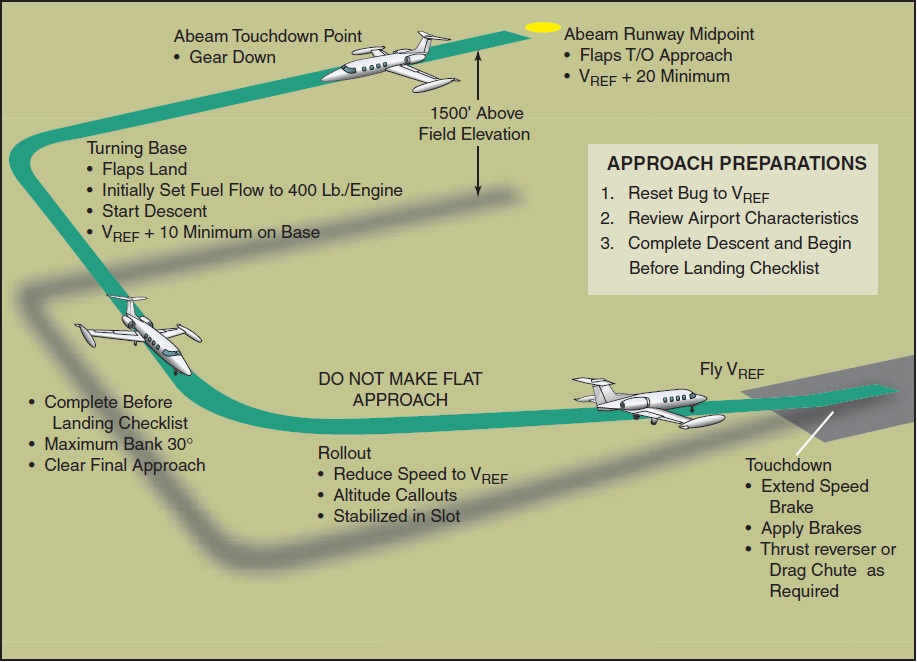
Chapter 15-Transition to Jet Powered Airplanes
Table of Contents
General
Jet Engine Basics
Operating the Jet Engine
Jet Engine Ignition
Continuous Ignition
Fuel Heaters
Setting Power
Thrust to Thrust Lever Relationship
Variation of Thrust with RPM
Slow Acceleration of the Jet Engine
Jet Engine Efficiency
Absence of Propeller Effect
Absence of Propeller Slipstream
Absence of Propeller Drag
Speed Margins
Recovery from Overspeed Conditions
Mach Buffet Boundaries
Low Speed Flight
Stalls
Drag Devices
Thrust Reversers
Pilot Sensations in Jet Flying
Jet Airplane Takeoff and Climb
V-Speeds
Pre-Takeoff Procedures
Takeoff Roll
Rotation and Lift-Off
Initial Climb
Jet Airplane Approach and Landing
Landing Requirements
Landing Speeds
Significant Differences
The Stabilized Approach
Approach Speed
Glidepath Control
The Flare
Touchdown and Rollout

LANDING SPEEDS
As in the takeoff planning, there are certain speeds that must be taken into consideration during any landing in a jet airplane. The speeds are as follows.
- ò VSOùStall speed in the landing configuration.
- ò VREFù1.3 times the stall speed in the landing configuration.
- ò Approach climbùThe speed which guarantees adequate performance in a go-around situation with an inoperative engine. The airplaneÆs weight must be limited so that a twin-engine airplane will have a 2.1 percent climb gradient capability. (The approach climb gradient requirements for 3 and 4 engine airplanes are 2.4 percent and 2.7 percent respectively.) These criteria are based on an airplane configured with approach flaps, landing gear up, and takeoff thrust available from the operative engine(s).
- ò Landing climbùThe speed which guarantees adequate performance in arresting the descent and making a go-around from the final stages of landing with the airplane in the full landing configuration and maximum takeoff power available on all engines.
The appropriate speeds should be pre-computed prior to every landing, and posted where they are visible to both pilots. The VREF speed, or threshold speed, is used
Ch 15.qxd 5/7/04 10:22 AM Page 15-20 as a reference speed throughout the traffic pattern. For example:- Downwind leg-VREF plus 20 knots.
- Base leg-VREF plus 10 knots.
- Final approach-VREF plus 5 knots.
- 50 feet over threshold-VREF.
The approach and landing sequence in a jet airplane should be accomplished in accordance with an approach and landing profile developed for the particular airplane. [Figure 15-23]

Figure 15-23. Typical approach and landing profile.
PED Publication